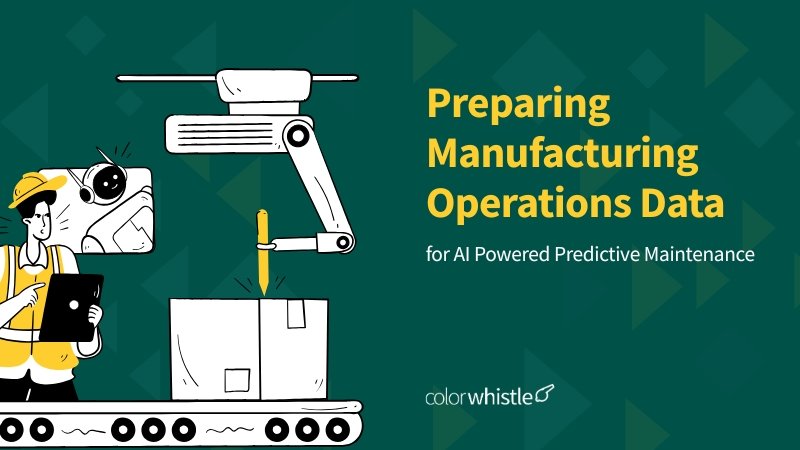Byju’s, a leading EdTech company, has expanded its services to over 150 million registered students across 100 countries, raising $5.9 billion through 29 funding rounds. This success is attributed to their early market entry and effective use of MVP strategies to validate their educational offerings.
The education technology (EdTech) industry has been growing exponentially, fueled by advancements in digital tools and the increasing demand for accessible, personalized learning experiences. For startups in this dynamic sector, proving the viability of an idea is a critical first step. But this raises a crucial question: Should you develop a Proof of Concept (PoC) or a Minimum Viable Product (MVP)? Let’s dive into the differences between these approaches, their unique benefits, and how EdTech startups can decide which one to pursue.
No matter your choice between a PoC or MVP, a professional website is key. ColorWhistle’s education website development services can help you build a user-friendly, engaging platform.
What is a Proof of Concept (PoC)?
A Proof of Concept (PoC) is a preliminary model demonstrating whether a specific idea, feature, or technology can work in practice. It is not a product or a prototype; instead, it’s an experimental exercise designed to test feasibility.
What is a Minimum Viable Product (MVP)?
A Minimum Viable Product (MVP) is a functional version of your product with just enough features to solve a core problem and gather real-world feedback from early adopters. Unlike a PoC, an MVP is customer-facing and focuses on validating market demand rather than technical feasibility.
Key Characteristics of a PoC:
- Goal: Validate the technical feasibility of a specific solution or technology.
- Audience: Internal stakeholders such as developers, engineers, or investors.
- Scope: Focused on one or two core functionalities.
- Output: Often takes the form of documentation, a basic working model, or a small-scale demonstration.
Key Characteristics of an MVP:
- Goal: Test market viability and gather feedback for iteration
- Audience: Target customers and early adopters
- Scope: Offers essential features with room for expansion
- Output: A simplified yet usable version of the product
For example, an EdTech startup might create a PoC to test if their machine learning algorithm can accurately personalize math quizzes for high school students based on learning patterns.
For instance, an EdTech startup might launch an MVP as an interactive app that delivers live coding tutorials to college students, focusing on a subject like Python programming.
Also Read
Key Differences Between PoC and MVP in EdTech
| Feature | Proof of Concept (PoC) | Minimum Viable Product (MVP) |
|---|---|---|
| Purpose | To validate the technical feasibility of a specific technology or feature. | To test market demand and gather user feedback for a core product offering. |
| Scope | Narrow and focused on a single technology or feature. (e.g., "Can we develop an AI tutor that provides personalized feedback on student writing?") | Broader, but minimal, encompassing core functionalities to address the main user problem. (e.g., "A basic e-learning platform with core features like course enrollment, video lectures, and quizzes.") |
| Functionality | Demonstrates a specific technical concept in isolation. May not be fully functional or user-friendly | Offers a basic, usable product experience that solves the core user problem. |
| Audience | Typically internal stakeholders (developers, engineers, investors). | Targeted at early adopters or potential customers to gather real-world usage data. |
| Refinement | Often rough and unpolished. It may have a limited user interface and lack many features. | Requires a certain level of polish and usability to be presentable to external users. |
| Timeline | Shorter timeframe as it focuses on a specific technical challenge. | Longer timeframe to ensure a functional product and gather sufficient user feedback. |
| Key Considerations | Technical feasibility, resource allocation, and potential roadblocks. | Market demand, user needs, product-market fit, and iterative development. |
When to Use Each Approach for EdTech Startups
EdTech startups often struggle to determine whether to focus on validating technical feasibility or market demand. The decision to use a Proof of Concept (PoC) or a Minimum Viable Product (MVP) largely depends on your startup’s goals, resources, and current stage.
When to Use a Proof of Concept (PoC)
A PoC is best suited for the very early stages of your EdTech startup. It’s about testing your idea’s technical feasibility and conceptual viability before committing significant resources to a full-fledged product.
Key Scenarios to Use PoC
Validating a Novel Idea or Technology:
If your EdTech solution involves a new, innovative technology (e.g., Artificial Intelligence, Machine Learning, Augmented Reality, or Blockchain), a PoC helps you test whether the technology can be implemented in an educational setting.
Limited Resources and Uncertain Feasibility:
If your startup has limited resources, a PoC is an efficient way to test whether your idea works in practice, focusing on validating the core technical aspects. A PoC is less resource-intensive and helps you avoid significant losses in case your idea turns out to be unfeasible.
Seeking Funding or Investor Buy-In:
When you’re looking to attract investors, a PoC is a powerful tool to demonstrate that your concept is technically viable and worth investing in. Investors often hesitate to fund untested or vague ideas, so having a PoC can provide confidence that the core technology or approach will work as expected.
Exploring Partnerships or Collaborations:
If you plan to partner with educational institutions, technology providers, or content creators, a PoC can showcase the potential of your idea, making it easier to secure partnerships or collaborations. It proves that your idea can provide tangible value in the educational space.
Early-Stage Concept Testing:
When you’re still exploring multiple ideas or features, a PoC can narrow down which ones have the most potential. You can test a specific feature or aspect of your product with a small, controlled group of users to gauge interest and viability.
When to Use an MVP (Minimum Viable Product)
An MVP is suitable when your idea has been validated conceptually (possibly through a PoC) and you’re ready to move forward with a product that can be tested with real users. The goal of an MVP is to launch a functional, market-ready version of your product with enough features to attract early adopters and collect valuable user feedback.
Key Scenarios to Use MVP
Testing Market Demand:
If you believe there is a market need for your EdTech solution, but you’re unsure if the audience will actually use it, an MVP helps you test the market. The MVP allows you to gather data on user behavior, preferences, and engagement. You can launch your product with core features, observe how it is used, and make adjustments based on real-world feedback.
Building a Customer Base Early:
If you are ready to start building a user base, an MVP is an essential tool. It allows you to attract early adopters who are likely to provide valuable feedback while offering them something functional that solves a specific pain point.
For example, you could launch an MVP of an online learning platform with basic course management and interactive features, and refine it based on user experiences.
Testing Core Features in a Real-World Context:
If your idea involves multiple features (e.g., an EdTech platform with course creation, assessments, and gamification), an MVP lets you prioritize and test the most critical features first. It allows you to observe how users interact with them and to refine the product over time, adding new features based on demand and feedback.
Also Read
Attracting Early Funding and Partnerships:
An MVP can help attract more investment or partnerships by showing that your product has real-world potential. While a PoC demonstrates feasibility, an MVP proves that people are willing to use the product. Many investors prefer to see tangible, early-stage user validation before committing significant funding.
Focusing on Iterative Development:
The MVP approach aligns well with agile methodologies, where you build a product incrementally based on user feedback. As an EdTech startup, you can use the MVP to continuously iterate and improve your product, ensuring that it evolves in line with user needs. Each iteration helps refine the product, fix bugs, and add features that matter to your users.
Proving Product-Market Fit:
The MVP approach is designed to help you test the product-market fit. By releasing a basic version of your EdTech product, you can assess if your solution truly addresses the problem you’re aiming to solve in the educational space. If users engage with the MVP and provide positive feedback, it’s a good sign that you’re on the right track.
Hybrid Approach: Starting with a PoC and Moving to an MVP
In some cases, EdTech startups can benefit from combining both approaches. Start with a PoC to test technical feasibility, then develop an MVP to validate market demand. For example
- Create a PoC to test whether an AI model can analyze student behavior patterns effectively
- Build an MVP that integrates this AI model into a simple app, allowing teachers to use it in classrooms and provide feedback
Why Choose ColorWhistle for Your EdTech Startup?
- Custom Solutions: Our team personalize solutions to your unique needs, whether you need a basic PoC or a market-ready MVP
- Cutting-Edge Technology: We stay updated with the latest tools and trends in EdTech to ensure your product is innovative and competitive
- Collaborative Approach: We partner closely with you, understanding your vision and goals to deliver a solution that aligns with your startup’s mission
Deciding Between PoC and MVP for Your EdTech Startup
Ultimately, PoC and MVP are complementary, not competing approaches.
- Use a PoC when: You’re testing whether your EdTech idea is feasible, particularly if it involves new or complex technologies, or if you need validation before moving forward
- Use an MVP when: You’re ready to take your concept to market, test real user engagement, and refine the product based on feedback. The MVP is your next step after validating the core idea with a PoC
By carefully considering where you are in your startup journey and what you aim to achieve, you can make an informed decision about which approach will help you move your EdTech startup forward. Combining both approaches (PoC first, MVP next) is often the most strategic path for startups aiming for long-term success.
Browse our ColorWhistle page for more related content and learn about our services. To contact us and learn more about our services, please visit our Contact Us page.
What’s Next?
Now that you’ve had the chance to explore our blog, it’s time to take the next step and see what opportunities await!





